Beatrix Potter wrote about mice. A mouse – well, a Dormouse – is an unconscious guest at the Mad Hatter’s tea party in Lewis Carroll’s Alice’s Adventures in Wonderland; and Reepicheep, a touchy but gallant mouse, is a favorite in C.S. Lewis’s Prince Caspian and Voyage of the Dawn Treader.
In Kenneth Grahame’s ever-enchanting The Wind in the Willows, a main character is Ratty, a Water Rat – well, a vole – who loves the River and insists that there’s nothing – nothing – better than messing about in boats.
In Roald Dahl’s The Witches, the narrator is captured by witches, fed a potion called “Formula 86 Delayed-Action Mouse Maker,” and turned – permanently in the book, non-permanently in the movie – into a mouse.
Table of Contents
Artistic Mice
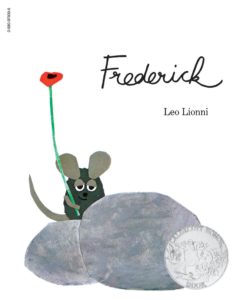
|
Leo Lionni’s Frederick (Dragonfly Books, 1973) may just be my favorite mouse. While all the other mice scurry around gathering food for winter, Frederick – a seemingly spacy and unproductive mouse – claims to be collecting words and colors, “because winter is gray.” In the dark depths of winter, Frederick is beautifully vindicated as he warms and delights all the other mice with his stories and poems about summer and spring. For ages 4 and up. |
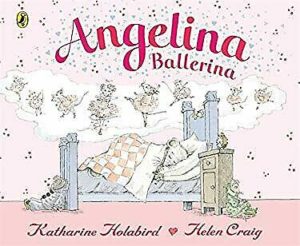
|
The main character of Katharine Holabird’s Angelina Ballerina (Viking Juvenile Books, 2008) is an enchanting little mouse who refuses to do anything but dance – no cleaning her room, no helping in the kitchen, and a lot of leaping and arabesques that are hard on the furniture and her mother’s cheese pies. Finally her sensible parents buy her a tutu and enroll her in the Camembert Academy ballet school, where she blossoms. There are many sequels and a television series. For ages 3-8. |
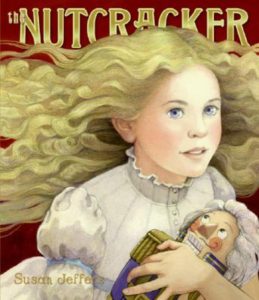
|
The famous Nutcracker Ballet – with score by Tchaikovsky – features an exciting battle between the Mouse King and his battalion of mice and the Nutcracker and his toy soliders. Susan Jeffers’s Nutcracker (HarperCollins, 2007) is a gorgeously illustrated version of the story from Christmas tree to Sugar Plum Fairy, for ages 3-8. |
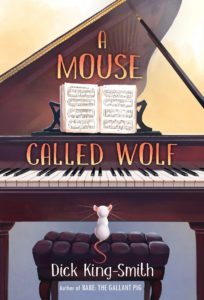
|
In Dick King-Smith’s A Mouse Called Wolf (Yearling, 1999), Wolfgang Amadeus Mouse is the youngest and smallest of Mary Mouse’s thirteen children, all born in the mousehole behind the elderly Mrs. Honeybee’s grand piano. Wolf loves to listen to Mrs. Honeybee play – and, to the astonishment of his mother, he proves to have a talent for singing. Soon Mrs. Honeybee is teaching him songs – and Wolf discovers that he can use his marvelous ability to save both his family and his human friend from disaster. A chapter book for ages 5-9. |
 |
Mice don’t just squeak; they also really do sing. Read about it in The Mystery of the Singing Mice from Smithsonian magazine. |
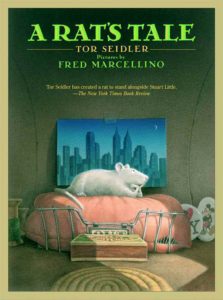
|
Montague Mad-Rat (the Younger), the endearing main character of Tor Seidler’s A Rat’s Tale (Farrar, Straus & Giroux, 2008) lives with his bohemian parents in the sewers under New York City. There his mother makes hats; his father builds mud castles; and Monty himself paints pictures on the shells his peripatetic Aunt Elizabeth brings home from her many travels. Then Monty meets and falls in love with upper-class wharf rat Isabella Moberly-Rat – hopelessly, he thinks, until his art saves all the wharf rats from extermination and he becomes a hero. There’s also a great sub-plot involving Monty’s peculiar black-sheep uncle, Montague Mad-Rat (the Elder). For ages 9-12. |
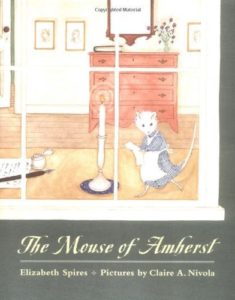
|
Emmaline, the heroine of Elizabeth Spires’s The Mouse of Amherst (Farrar, Straus & Giroux, 2002), lives behind the wainscoting in Emily Dickinson’s bedroom. Soon she and Emily begin to exchange poems, through which they share their hopes and feelings. Lavinia, Emily’s sister, however, is set on ridding the house of mice – and though Emily manages to save her friend from the ratcatcher’s ferret, Emmaline decides sadly that it’s time to move on. Included, along with eight of Dickinson’s poems, is a short biography of the poet. For ages 8-12. Out of print, but available from libraries and used-book suppliers. |
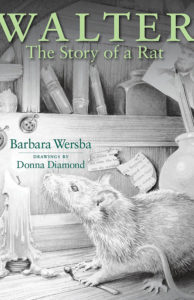
|
In Barbara Wersba’s Walter: The Story of a Rat (Front Street Press, 2005), Walter, a lonely and literary rat (he’s named for Sir Walter Scott) secretly shares a house and a library with a cross and reclusive children’s author, Miss Pomeroy. Disturbed by the fact that there seem to be no rat heroes in children’s books, he finally decides to contact Miss Pomeroy, first leaving her a note that reads “I live here too.” She writes back: “I know.” A wonderful story of an unusual friendship for ages 10 and up. Also out of print, but copies are still available. |
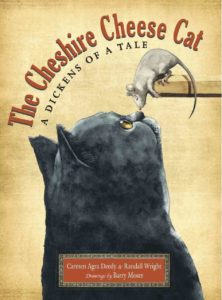
|
The Cheshire Cheese Cat by Carmen Agra Deedy and Randall Wright (Peachtree Publishers, 2011), the starring role belongs to Skilley, alley cat and contender for the post of chief mouser at the famed writers’ haunt, Ye Olde Cheshire Cheese Inn – but often in literature, where there’s a cat, there’s a mouse. The mouse here is Pip, a highly literate rodent with an enormous vocabulary, who befriends Skilley when he reveals his awful secret – when it comes to food, he much prefers cheese to mice. Characters include the evil cat Pinch, Maldwyn, a wounded royal raven, Queen Victoria, and Charles Dickens – who spends a lot of time at the inn, struggling to find an opening line for his new novel. (Hint: “He was the best of toms. He was the worst of toms.”) Kids may not get all the Dickensian references, but finding them is part of the fun. For ages 10-13. |
